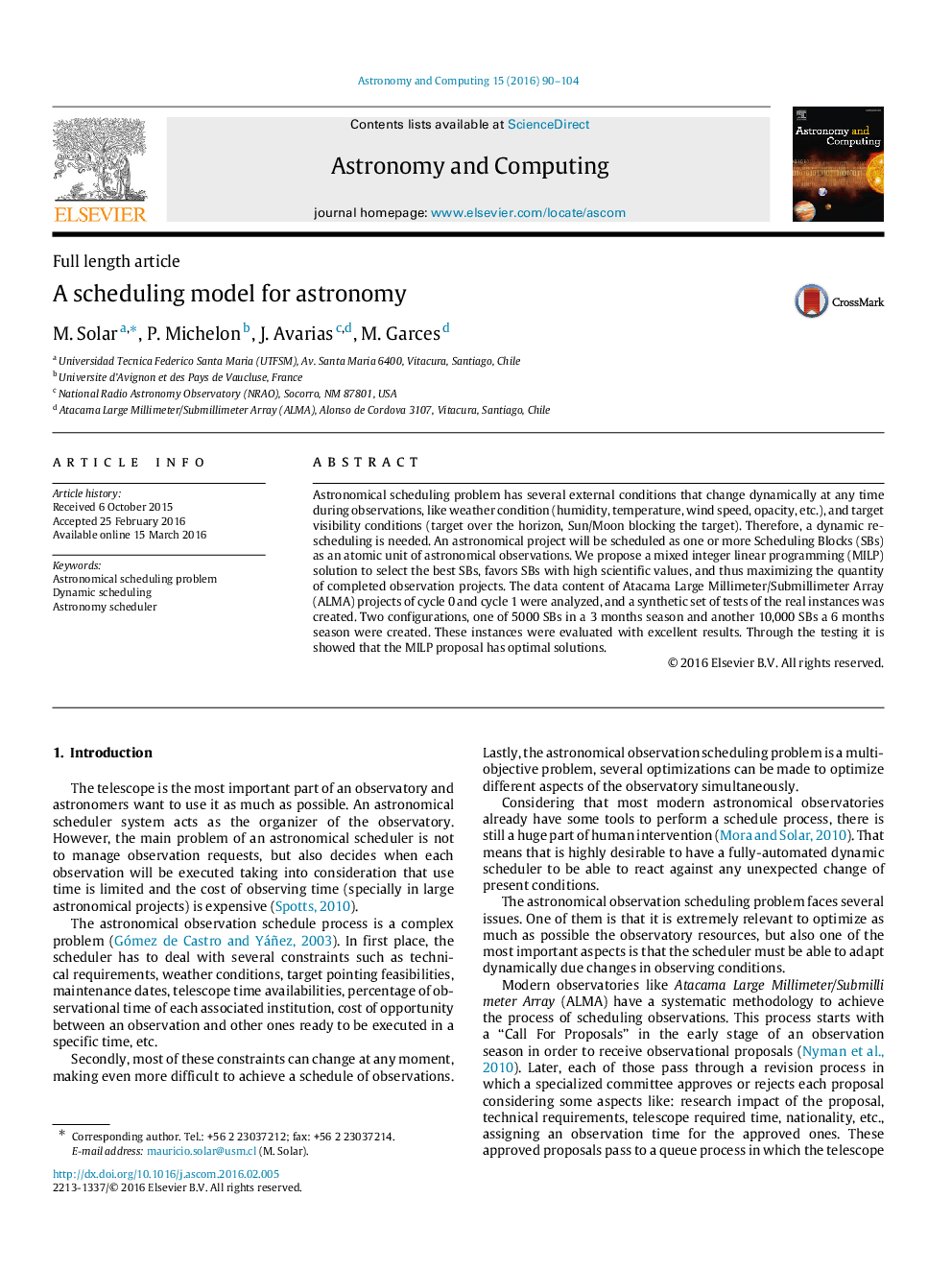| Article ID | Journal | Published Year | Pages | File Type |
|---|---|---|---|---|
| 497506 | Astronomy and Computing | 2016 | 15 Pages |
Astronomical scheduling problem has several external conditions that change dynamically at any time during observations, like weather condition (humidity, temperature, wind speed, opacity, etc.), and target visibility conditions (target over the horizon, Sun/Moon blocking the target). Therefore, a dynamic re-scheduling is needed. An astronomical project will be scheduled as one or more Scheduling Blocks (SBs) as an atomic unit of astronomical observations. We propose a mixed integer linear programming (MILP) solution to select the best SBs, favors SBs with high scientific values, and thus maximizing the quantity of completed observation projects. The data content of Atacama Large Millimeter/Submillimeter Array (ALMA) projects of cycle 0 and cycle 1 were analyzed, and a synthetic set of tests of the real instances was created. Two configurations, one of 5000 SBs in a 3 months season and another 10,000 SBs a 6 months season were created. These instances were evaluated with excellent results. Through the testing it is showed that the MILP proposal has optimal solutions.
